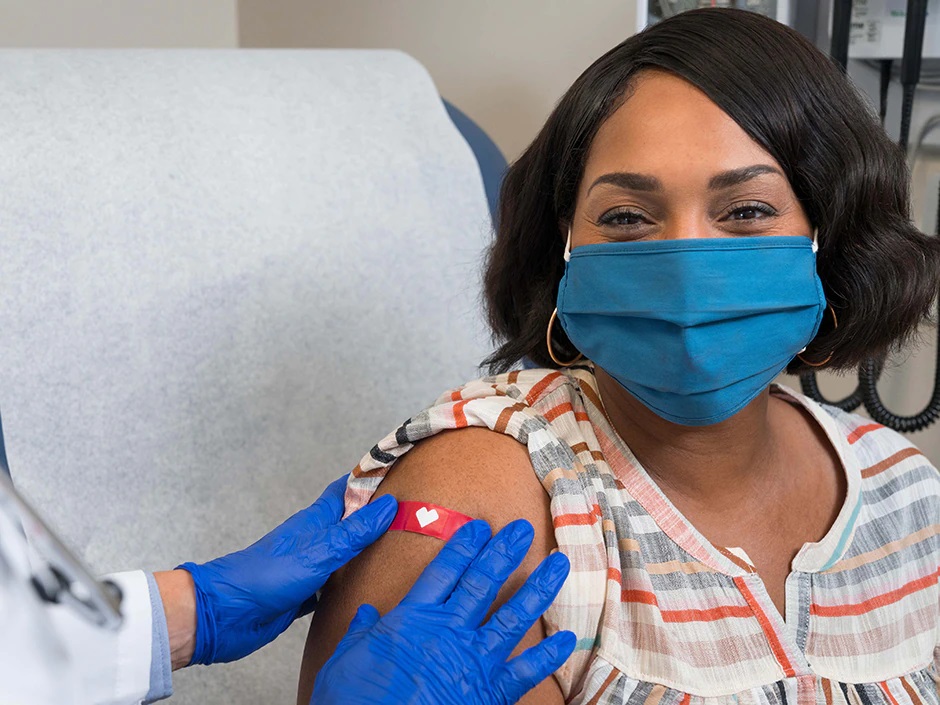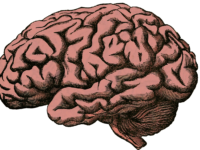There’s a trail of red arrows extending along the carpeted floor toward a white tent with two openings, a trace of rubbing alcohol lingers in the air, and Whitney Houston’s “I Wanna Dance with Somebody” is playing over the speakers dotted along the speckled tile ceiling when, suddenly, there are two faint thuds to the right of the white tent. Someone calls frantically for an employee who comes bearing water for a dazed woman lying on the carpeted floor next to a plastic chair. Another person says that the woman fainted off the chair shortly after sitting down again following an injection of the COVID-19 vaccine. In the medical world, there’s another word for this: vasovagal syncope.
Vasovagal refers to a reaction directed by the vagus nerve, a major component of the parasympathetic nervous system, where heart rate decreases and blood vessels in the legs widen. Syncope, otherwise known as fainting, is defined as a brief loss of consciousness — with vasovagal syncope being the most frequent type, according to a December 2014 article published in Frontiers in Physiology. It happens when the sympathetic nervous system has an exaggerated response to a perceived threat, sending the body into fight-or-flight mode. The parasympathetic nervous system, which calms the body, overcompensates for the response, resulting in the loss of consciousness.
Syncope, otherwise known as fainting, is defined as a brief loss of consciousness — with vasovagal syncope being the most frequent type
A September 2014 review in Frontiers in Physiology identified three stages at the onset of vasovagal syncope based on physiological indicators including heart rate, blood pressure, and nerve activity. During the first stage, mutual increases in sympathetic nerve and vagus nerve activity maintain blood pressure. Sympathetic nerve activity increases to respond to the present threat, leading to a rise in blood pressure. Then, the parasympathetic nervous system dilates blood vessels to decrease blood pressure, and this fluctuation continues until stage two when heart rate increases to counteract the falling blood pressure. In stage two, parasympathetic nerve activity starts to overwhelm sympathetic nerve activity, forcing the sympathetic nervous system to increase its response. Stage two begins when the sympathetic nervous system can no longer compensate for the blood pooling in the lower body by increasing blood pressure or heart rate, so blood flow to the heart remains low. The sympathetic nervous system then raises the amount of air the lungs take in to increase blood flow back to the heart, but this too fails. Because the heart is pumping less blood, blood pressure decreases, and sympathetic nerves increase heart rate again. Stage three occurs when the vagus nerve suddenly and significantly lowers heart rate, and sympathetic nerve activity stops. This results in an immediate drop in blood pressure as well as potential cardiac arrest, cold sweat, nausea, and ultimately fainting when the brain doesn’t receive enough oxygen.
Given these processes that lead to fainting, how can vasovagal syncope be prevented? If blood pooling in the lower body makes it more difficult for blood pressure and heart rate to be maintained in stage two, then either blood flow towards the heart needs to be increased or blood pressure and heart rate maintenance needs to be aided manually. To increase blood flow back to the heart, someone at risk of fainting should lie down completely (i.e., not sit down) because lying down will redistribute blood evenly throughout the body. To maintain blood pressure and heart rate, someone could tense their muscles, repeatedly cross and uncross their legs, or squeeze their hands because tensing could prevent the sudden drop in heart rate and blood pressure that leads to passing out. Another suggestion in the Permanente Journal to prevent fainting is hydrating and staying hydrated. When someone is dehydrated, blood volume drops, which decreases blood pressure and makes it easier to pass out.
If blood pooling in the lower body makes it more difficult for blood pressure and heart rate to be maintained in stage two, then either blood flow towards the heart needs to be increased or blood pressure and heart rate maintenance needs to be aided manually.
Unfortunately, situations like the one where the woman passed out after receiving a vaccination are quite common, but using the strategies described can make them less frightening. If you or someone near you passes out, ensure that they remain lying on their back for a few minutes before slowly getting up to prevent fainting again. In the less common cases where someone isn’t breathing, doesn’t regain consciousness within one minute, has a head injury, or shows signs of a stroke, call 911 or a local emergency number. Otherwise, having water, juice, or a light salty or sugary snack on hand can be beneficial to someone who passed out once they fully regain consciousness. Even though the nervous system can glitch out in syncope-inducing situations, that doesn’t mean you have to.
Front Physiol. (2014). DOI: 10.3389/fphys.2014.00471
Perm J. (2019). DOI: 10.7812/TPP/17-136
Front Physiol. (2014). DOI: 10.3389/fphys.2014.00343






